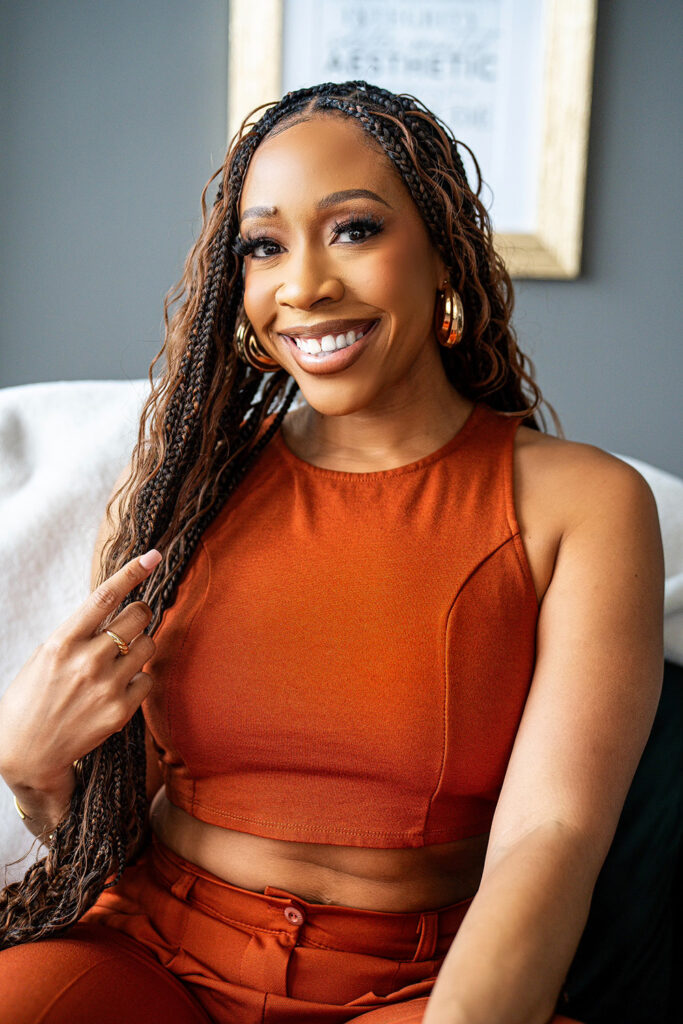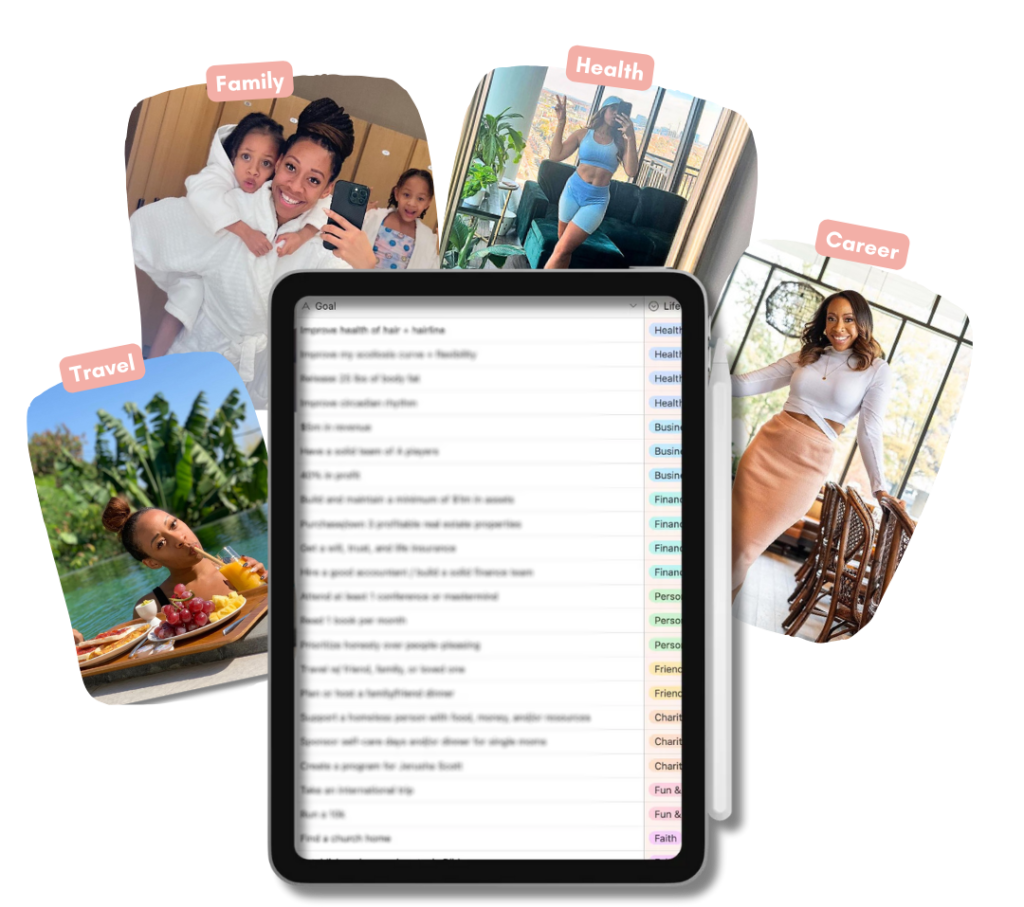
This post is part of the Content Creation Series. I know content creators are always wondering if they’re giving way too much or too little, and I want to help clarify that. Each post in the series answers the question “what goes inside of a [content type]?” Today, we’ll talk about creating content for a masterclass.
Want a recap of the other posts in this series? Click the links below:
I just HAD to include masterclasses in this series since they’re a great way to make 4 or 5 figures in a month without the strenuous effort of creating an online course. Masterclasses are more simple and generate income based on one time fees. (The advantage of creating an online course over a masterclass is that you can bring in a recurring income with an installment plan.) Masterclasses are like a combination of webinars and online courses. They should have the value of a small online course with the presentation style of a webinar.
My history with masterclasses
I got the idea to create a masterclass from my very first in-person workshop which only had about eight attendees. I knew the seminar content was valuable, so I wanted to expand my reach. I decided to use that workshop content as my masterclass content. To build interest in my new masterclass, I hosted a free webinar with the goal of upselling the attendees to purchase the masterclass for $97. I made a little over $2,000 from that first masterclass, and at the time, that sufficed for me. I had no intention of carrying the students/registrants further.
I offered my second masterclass right before I wanted to launch a new course. I sold the masterclass to approximately 100 people for $67 (a no brainer price for the promised value). My goal for that class was to pitch my high-end online course by offering the registrants an “early bird” special.
So what do we learn from my story?
Lesson 1: All of your content needs a purpose
Any time you create content you need to think about the end goal which usually is to somehow grow your business. This goes for masterclasses, too.
Remember the recurring tweet from this series? No? Here it is again:
[Tweet “Smart content should build your brand, your email list, and your income.”]
Your content has to work for YOU. It has to add value to your business.
What’s your masterclass’s purpose?
Is it for it to be your primary source income for the month? Is it to introduce your audience to a larger product? Or, is it to get them comfortable investing in you with smaller commitments.
Lesson 2: Build trust with small purchases
Build trust with small purchases
When you create content and products, it’s smart to create products with “no-brainer” prices. Doing so helps you get people from “reader/subscriber/fan” to “customer” quickly. You have to make it easy for them to say, “yes.” Once they say yes to smaller purchase, it’s easier for them to say yes to larger purchases. These smaller monetary transactions help you build trust with people which is soooo important. It’s easier for them to trust you with larger investments when they’ve seen what you have to offer. Most of my clients have made smaller investments by purchasing my products under $200 before they made a larger investment with me
“Okay, I can trust Maya with $12,” becomes, “Okay, I think her content is worth $97.” Then eventually, “Okay, I think I’m ready to join her course or hire her.”
It’s very unlikely that people will go from simply being a fan to being a premium customer.
[Tweet “Turn your followers into customers quickly. Create products with “no-brainer” prices to make it easy for them to say, “YES!””]
SO… here’s what you need to think about when creating masterclass content:
1. What is the goal?
What should your masterclass help you accomplish? Identify end-goals for both your students and your brand.
For your students:
- How will this class build your audience’s trust in you?
- What are the top three things your audience will learn from this training?
- What is the next logical step for them to take once the masterclass is over? (Maya’s Tip: this should lead to buying more services from you.)
For your brand:
- How will this class build your business? Is the goal of this class be to build your brand, your list, or your bank account?
- What larger product, service, coaching, etc. will you pitch at the end??
- How much money do you want to make from this masterclass?
- If applicable, how much money do you want to make from your upsell?
2. What are the basic details?
What’s the name of your masterclass? Will you use a specific hashtag? When (date & time) will your masterclass be? Will you offer a replay? How will you build interest for the class? What will your “no brainer” price be? What smaller purchase will you entice people with to build monetary trust?
3. What will your masterclass content be?
What problem will you solve for your audience? What’s your big idea? What main points can you break it into? What specific questions will your masterclass answer? (Knowing this will help you create your sales page!)
4. How long will it be (based on the content inside)?
My masterclasses are usually 4-hours long with a 30-minute break. Four hours may seem like a long, scary amount of time to teach, but if you break it up into segments, you’ll see it’s not that scary. You can do 35 – 45-minute segments and include check-ins with your students to answer questions. Involve your attendees your lessons and include pauses to give them time to consider what you’ve taught. Trust me. A 5-minute pause seems way longer to you than it does to them. (Maya’s Tip: Mute your mic during this time)
Here’s the EXACT checklist I use when I create all kinds of content. I use it for blog posts, challenges, email courses, webinars, and masterclasses!
5. How will you break up the time?
I recommend going in as prepared as possible. Create a basic outline of how you’ll break down the time. Doing so will help you feel more at ease. So if you feel nervous, you’ll have a plan written out. Just make sure you don’t pack the schedule too tight. Student participation, discussions, questions, and work time take much longer than you’d think. Be sure to plan enough time for those activities.
Time breakdown:
- Class & Teacher Intro
- Masterclass content: lesson segments + examples
- Participant Activities: small group discussion, work time, whole group discussions
- Live Q & A
- Outcome Check
- Next Steps
6. What will they get?
What are the actual features of your masterclass? Will they get a workbook? Will there be chat capabilities? Access to the presentation slides? Entrance into a private FB group?
I include a workbook, a chat box for interaction, and a presentation in every masterclass I host. Since I offer lifetime access to the replay, I don’t provide presentation slides. I tend to reserve access to my private Facebook community to people in my premium courses or coaching program.
I know it seems like a lot of work, but the return you get for your time investment makes it all worth it. Creating masterclass content can be scary the first time you put it all together. But, you got this.
[Sample] Materials:
- Workbooks
- Worksheets / Checklists
- Presentation
Still feel nervous about the behind the scenes of planning a masterclass? I’ve got you covered. Here’s the EXACT checklist I use when I create all kinds of content. I use it for blog posts, challenges, email courses, webinars, and masterclasses!




I have never done masterclasses but after reading your post, it looks interesting to do a masterclass. Thanks for this great post!